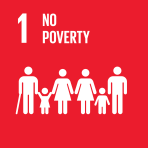The commodity dependence trap

- Author: United Nations Conference on Trade and Development
- Main Title: Commodities and Development Report 2021 , pp 9-23
- Publication Date: August 2021
- DOI: https://doi.org/10.18356/9789214030461c006
- Language: English
Whether commodity dependent developing countries are trapped in their state of commodity dependence is explored in this chapter. The persistence of dependence is documented, and some potential drivers of the phenomenon are highlighted. Identifying the correlates of commodity dependence could inform policies seeking to enable commodity dependent developing countries to break with commodity dependence. More specifically, how countries move in and out of three states is measured in this chapter. These states are: non-commodity dependence, a state that characterizes countries that derive less than 60 per cent of their merchandise exports from the commodity sector; a state of commodity dependence for countries deriving between 60 per cent and 80 per cent of merchandise export earnings from the commodity sector; and a state of strong commodity dependence for countries deriving more than 80 per cent of their merchandise export earnings from the commodity sector. As noted in chapter 1, Background, if countries moved in and out the three states seamlessly, commodity dependence would not be a serious issue. The problem arises if countries get stuck in one of the two commodity dependence states, given the negative outcomes associated with dependence.
-
From This Site
/content/books/9789214030461c006dcterms_title,dcterms_subject,pub_keyword-contentType:Journal -contentType:Contributor -contentType:Concept -contentType:Institution105



